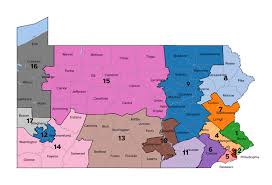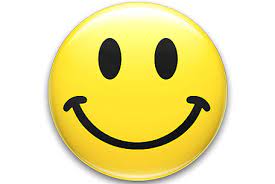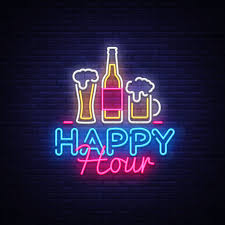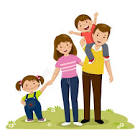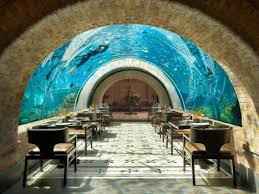The Charm and Rich Heritage of Traditional Irish Culture
When one thinks of Ireland, images of rolling green hills, ancient castles, and lively pubs often come to mind. But beyond its picturesque landscapes and vibrant cities lies a culture steeped in tradition and history that has captivated people around the world.
Traditional Irish culture is a tapestry woven with threads of music, dance, folklore, language, and customs that have been passed down through generations. At the heart of this cultural heritage is a deep sense of community, storytelling, and a strong connection to the land.
Music and Dance
Irish music holds a special place in the hearts of many. From soul-stirring ballads to lively jigs and reels, traditional Irish music is known for its emotive melodies and toe-tapping rhythms. Instruments like the fiddle, tin whistle, bodhrán (Irish drum), and uilleann pipes create a unique sound that is unmistakably Irish.
Accompanying the music is Irish dance, characterized by quick footwork and precise movements. The iconic Riverdance performances have brought Irish dance to global audiences, showcasing the skill and grace of dancers in their intricate steps.
Folklore and Mythology
The rich tapestry of Irish folklore weaves together tales of mythical creatures like leprechauns, banshees, and fairies with legends of heroic warriors such as Cú Chulainn and Fionn mac Cumhaill. These stories have been passed down orally for centuries, preserving the magic and wonder of Ireland’s past.
Gaelic Language
The Gaelic language (Gaeilge) is an integral part of traditional Irish culture. While English is predominantly spoken in Ireland today, efforts are being made to revive the use of Gaelic through schools, cultural institutions, and community initiatives. The language serves as a link to Ireland’s ancient past and reinforces its unique identity.
Celebrations and Customs
Ireland is known for its festive spirit, with traditional celebrations like St. Patrick’s Day bringing people together in joyous revelry. Customs such as ceilidhs (traditional social gatherings with music and dance) and wakes (gatherings to honor the deceased) reflect the warmth and hospitality that are hallmarks of Irish culture.
In conclusion, traditional Irish culture is a treasure trove of artistry, storytelling, resilience, and community spirit. It continues to thrive in modern Ireland while resonating with people worldwide who are drawn to its timeless charm.
Exploring the Richness of Heritage: Key Insights into Traditional Irish Music, Dance, Myths, and More
- What is traditional Irish music?
- How important is dance in traditional Irish culture?
- What are some popular myths and folklore in Ireland?
- Is the Gaelic language still spoken in Ireland?
- What are some traditional Irish customs and celebrations?
- Are there specific instruments associated with traditional Irish music?
- How does traditional Irish cuisine differ from modern dishes?
- What role does storytelling play in preserving traditional Irish culture?
What is traditional Irish music?
Traditional Irish music is a vibrant and soulful genre that encompasses a rich tapestry of melodies, rhythms, and instruments deeply rooted in Ireland’s cultural heritage. Characterized by lively jigs, reels, haunting ballads, and spirited pub songs, traditional Irish music evokes a sense of nostalgia and storytelling. Instruments like the fiddle, tin whistle, bodhrán (Irish drum), uilleann pipes, and accordion create the distinctive sound that has enchanted audiences worldwide. Whether performed in cozy pubs or grand concert halls, traditional Irish music captures the essence of Ireland’s history, emotions, and community spirit with each note played.
How important is dance in traditional Irish culture?
Dance holds a paramount significance in traditional Irish culture, serving as a vibrant expression of the country’s rich heritage and community spirit. From lively jigs and reels to graceful step dances, Irish dance embodies the rhythm, energy, and storytelling that are deeply rooted in the culture. Dance not only entertains but also connects people to their past, with each step carrying echoes of generations before. Through intricate footwork and precise movements, Irish dance celebrates both individual skill and collective unity, making it a cherished art form that continues to captivate audiences worldwide.
What are some popular myths and folklore in Ireland?
Ireland is steeped in a rich tapestry of myths and folklore that have captured the imagination of people for centuries. Some popular myths and legends from Irish folklore include tales of leprechauns, mischievous fairies, banshees foretelling death, and the heroic deeds of legendary figures like Cú Chulainn and the Fianna warriors. These stories are not just entertainment but serve as a window into Ireland’s cultural heritage, beliefs, and values. The enduring presence of these mythical beings in Irish storytelling reflects the deep connection between the Irish people and their land, history, and sense of wonder about the world around them.
Is the Gaelic language still spoken in Ireland?
The question of whether the Gaelic language is still spoken in Ireland often sparks curiosity and discussion. While English is the predominant language used in daily life and official settings, Gaelic, also known as Gaeilge, holds a significant place in Irish culture and heritage. In certain regions, particularly along the western coast and in Gaeltacht areas, Gaelic remains a living language spoken by communities dedicated to its preservation. Efforts to promote Gaelic education and usage aim to ensure that this ancient language continues to thrive as a vital part of Ireland’s identity and cultural legacy.
What are some traditional Irish customs and celebrations?
Traditional Irish customs and celebrations hold a special place in the hearts of the Irish people and those who appreciate their rich culture. Some of the most beloved traditions include St. Patrick’s Day festivities, where parades, music, dance, and wearing green are common sights. Ceilidhs, traditional social gatherings filled with music and dance, bring communities together in joyous camaraderie. Wakes, gatherings to honor and remember the deceased, are marked by storytelling, music, and shared memories. These customs not only reflect the deep-rooted cultural heritage of Ireland but also showcase the warmth, hospitality, and strong sense of community that define traditional Irish life.
Are there specific instruments associated with traditional Irish music?
In traditional Irish music, several instruments hold a special place for their distinctive roles in creating the unique sound that defines the genre. The fiddle, renowned for its emotive melodies and lively tunes, is a staple instrument that captures the essence of Irish music. The tin whistle, with its sweet and clear tones, adds a whimsical quality to performances. The bodhrán, a traditional Irish drum played with a tipper or beater, provides rhythmic accompaniment that drives the music forward. Additionally, the uilleann pipes, known for their hauntingly beautiful sound, contribute depth and complexity to traditional Irish compositions. These instruments, among others, form an essential part of the rich tapestry of traditional Irish music and play a vital role in preserving this cultural heritage for future generations to enjoy.
How does traditional Irish cuisine differ from modern dishes?
Traditional Irish cuisine, rooted in simplicity and hearty flavors, differs from modern dishes in its emphasis on locally sourced ingredients and time-honored cooking techniques. Classic Irish dishes like colcannon, Irish stew, and soda bread showcase the use of basic ingredients such as potatoes, meat, and dairy products, reflecting a history of resourcefulness and reliance on what the land provides. In contrast, modern Irish cuisine often incorporates global influences and contemporary culinary trends, resulting in innovative fusions and creative presentations that offer a fresh take on traditional flavors while still honoring the essence of Irish cooking.
What role does storytelling play in preserving traditional Irish culture?
Storytelling holds a sacred place in preserving traditional Irish culture, serving as a vital thread that weaves together the past and present. Through myths, legends, and folk tales passed down through generations, storytelling not only entertains but also educates, inspires, and connects individuals to their heritage. These narratives carry the wisdom of the ancestors, impart moral lessons, and instill a sense of identity and belonging in listeners. By keeping these stories alive and retelling them with reverence, the Irish community ensures that its cultural legacy endures for future generations to cherish and learn from.



